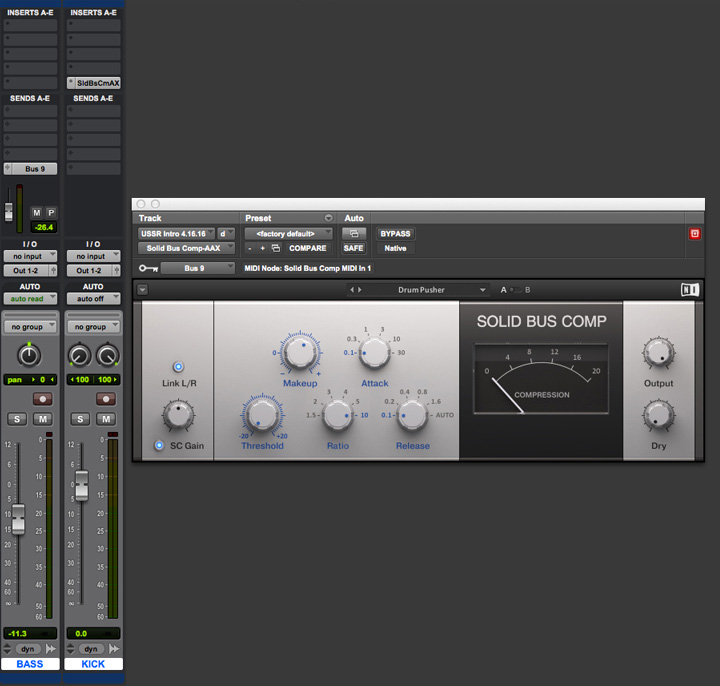The term “sidechaining” commonly refers to a technique in which the output from one audio track is used to control a compressor or gate on a completely different audio track via that processor’s external sidechain input.
Most hardware and nearly all software compressors and gates have external sidechain inputs.

A Waves C1 Gate with its external sidechain input, indicated by the key graphic. Modern gates may be used for many of the same ducking techniques as compressors.
Duck Scoop
Sidechaining was originally used for “ducking” the level of music or other program material in radio and television broadcasting, but also for voiceover recording. The music would be run through a compressor and the microphone signal routed to the sidechain input, where it regulated the amount of gain reduction. Whenever someone spoke, the music would become quieter, or “duck,” so that the voice could be heard more clearly. By using fast attack times and slow release times, the level changes could be smoothed out so as to not to be too abrupt and noticeable.
This same compression technique is also quite effective when mixing vocals in a recording studio. You typically choose an individual track that is competing with the voice, such as a thick keyboard or chunky guitar track, and use sidechain compression to gently lower the level. Unlike in broadcasting, the idea is for the ducking to be subtle and unnoticeable. Faster release times obviously help facilitate this.
RELATED ARTICLE
Naturally, the same technique can also be effective when applied to instrumental parts. If your nylon-string guitar, sax, flute or other solo instrument isn’t cutting through the rest of the mix, identify the closest competitor and duck that track slightly. Likewise, if a melodic hook isn’t having sufficient impact or intricate ornamental parts are being obscured by another track, try ducking the offender to create a little additional room.
Just For Kicks
Few tracks compete more fiercely for common sonic space than kick drum and bass, both of which are expected to provide power and excitement and are therefore equally important. Although EQ can be effective in reducing the conflict, an alternative approach is to insert a compressor on the bass track and bus signal to its sidechain input from the kick drum track via an effect send.

A Native Instruments Solid Bus Compressor inserted into a kick drum track, with its external sidechain input being fed from the bass track via an aux send (Bus 9). Note the handy SC Gain control, which provides 20dB of boost or cut for matching input levels.
This technique works best with styles of music that have rhythmically consistent and relatively simple drum and bass parts, such as EDM and straightforward pop. Whatever style you try it on, however, unless you want the effect to be obvious, begin with fast attack and release times to get the kick in and out quickly.
Pump It Up
In addition to its problem-solving prowess, sidechaining may also be used creatively. For example, use a kick drum to duck a synth pad or other sustained sound dramatically so that the part pulses rhythmically in time to the kick. Or try ducking a group of tracks rather than a single track. You can even insert a compressor into the master output bus and use the kick track, or any other track, to duck the entire mix. All of these techniques are frequently used — and sometimes abused — in house and other types of EDM.
Any track can be used to affect any other using sidechaining, and adjusting the controls on even the most basic compressors and gates can lead to compelling sounds. So, as always, experiment!
RELATED ARTICLE
This column addresses topics of interest to recordists, ranging from remedial tutorials on essential terms and concepts, such as this one, to more advanced examples of studio geekery. Next up in On Tracks: “Why Aren’t You Automating Your Effects?”
About the Author:
Barry Cleveland is a San Francisco Bay Area-based journalist, author, guitarist and composer. He was an editor at Guitar Player magazine for 12 years and at Mix and Electronic Musician magazines before that. His book, “Joe Meek's Bold Techniques” is a cult classic, and he also contributed to the book “Whole Lotta Led Zeppelin.” He has released five albums and composes music for film and television.



